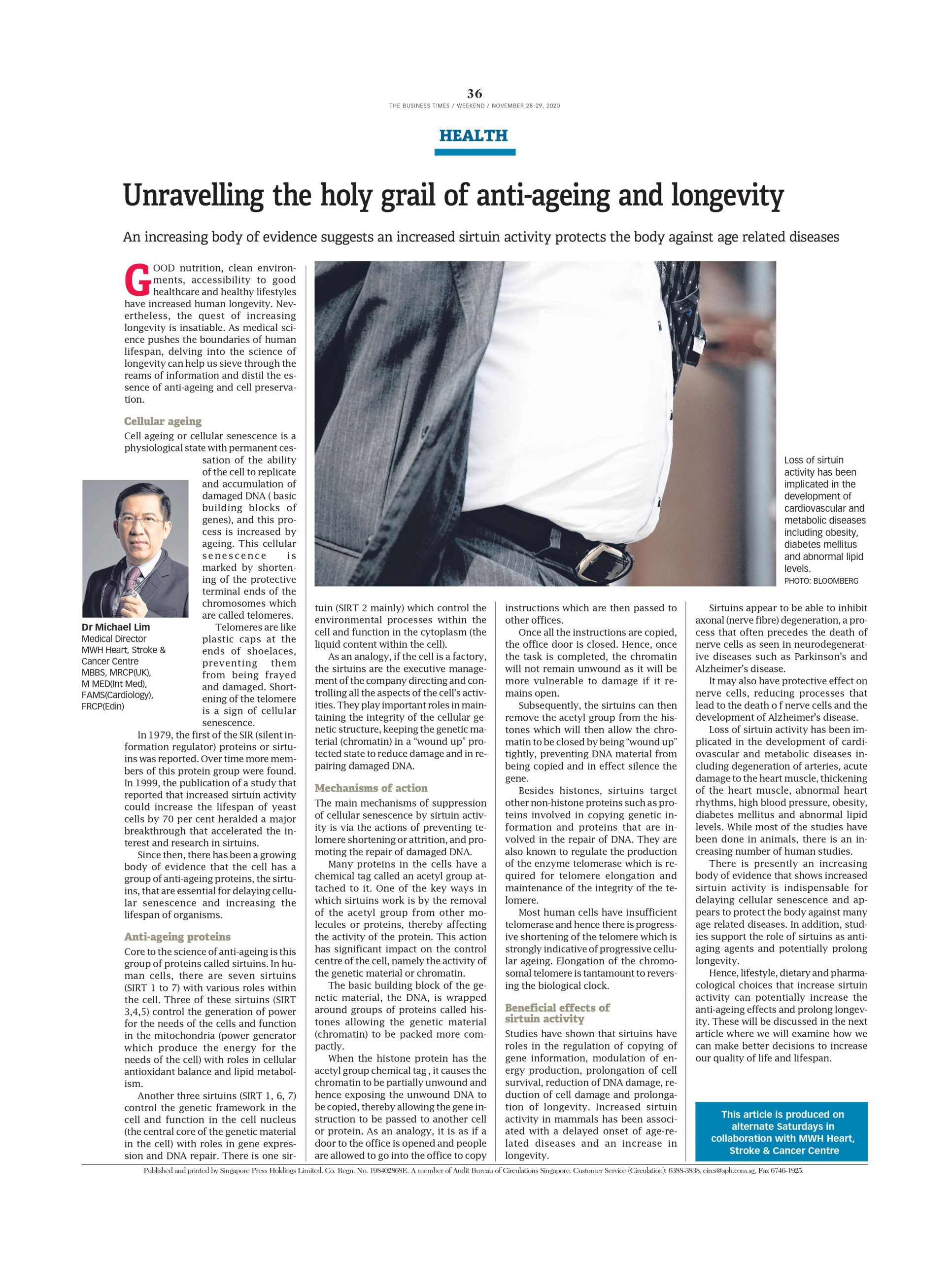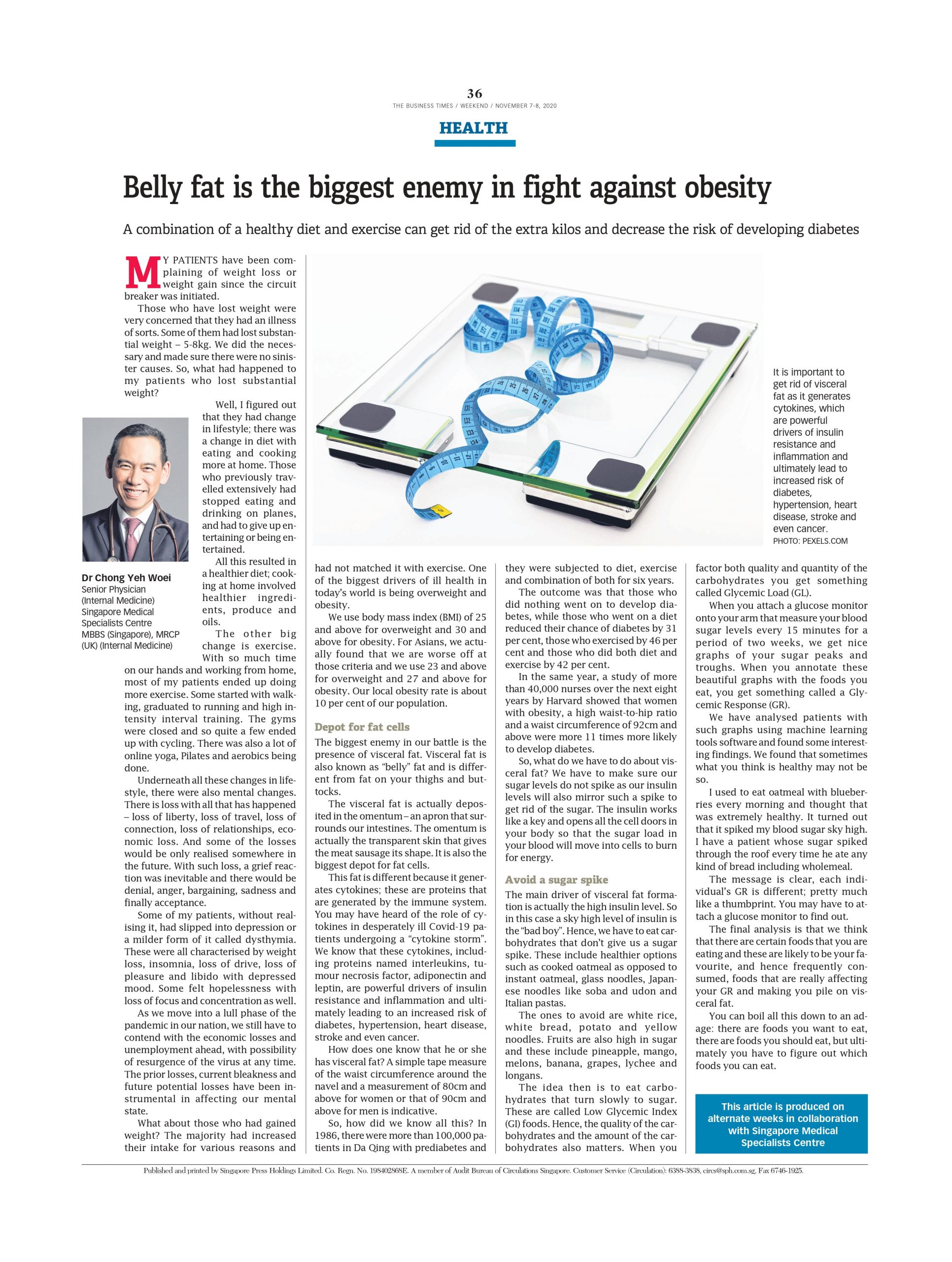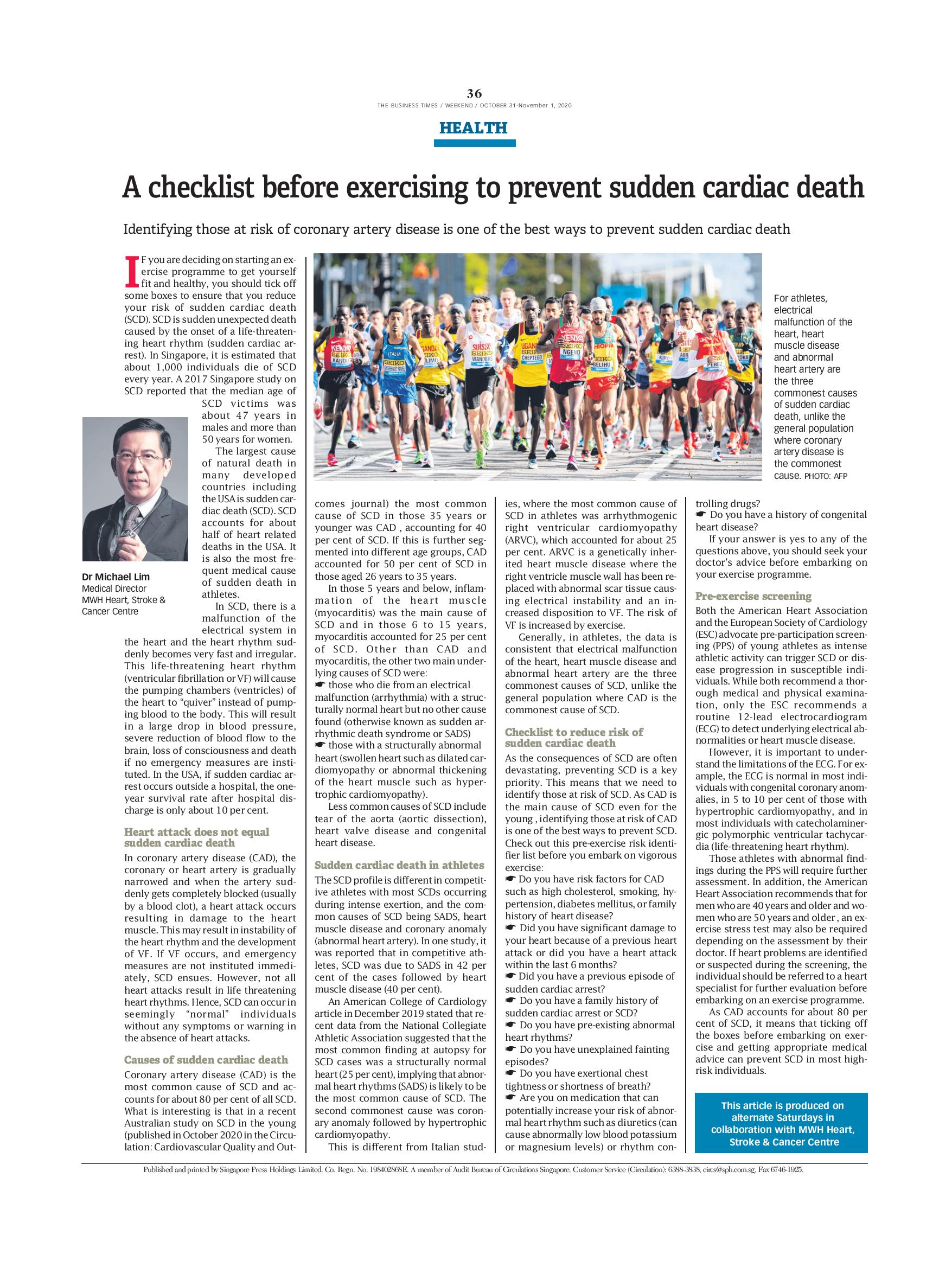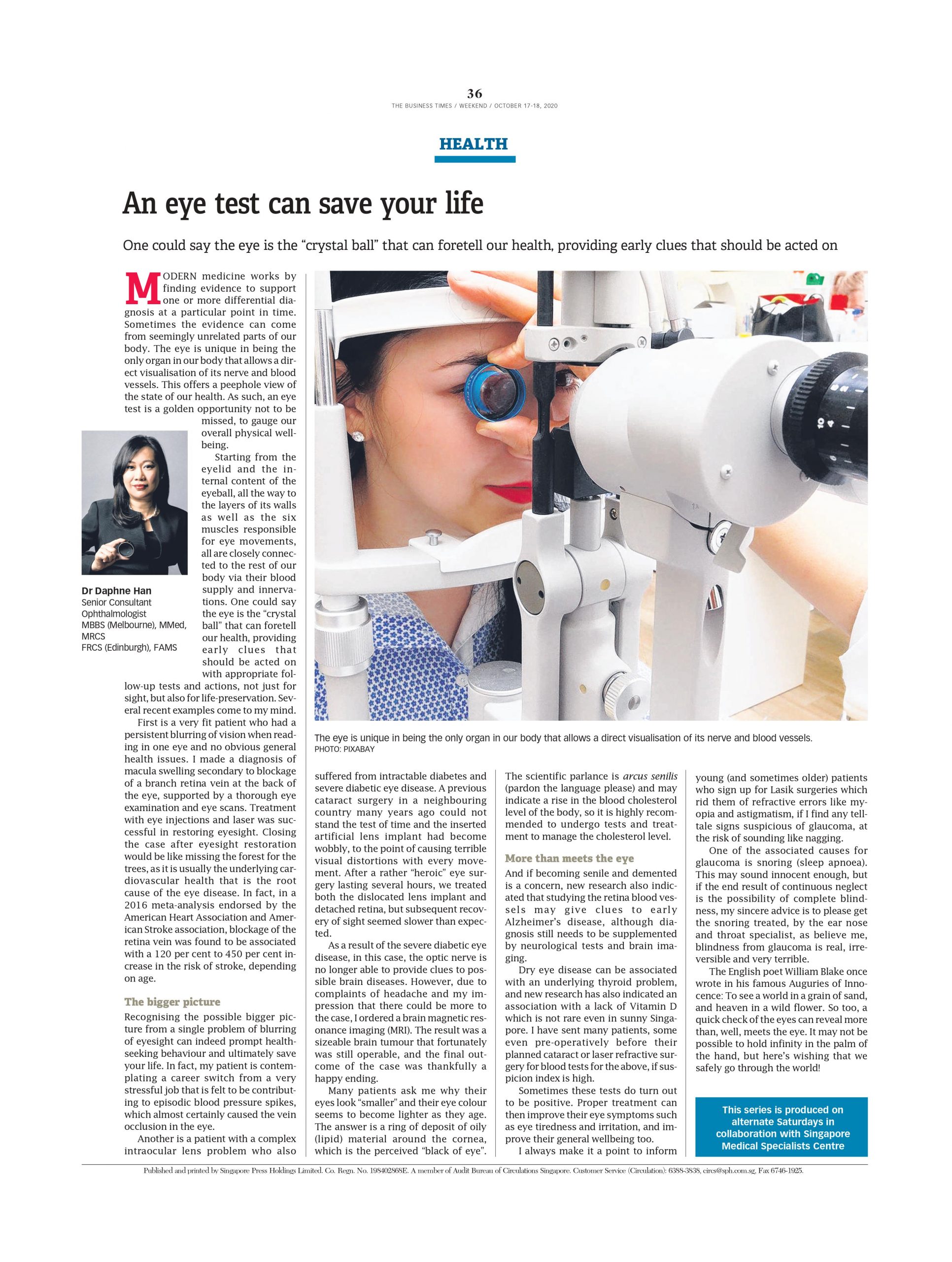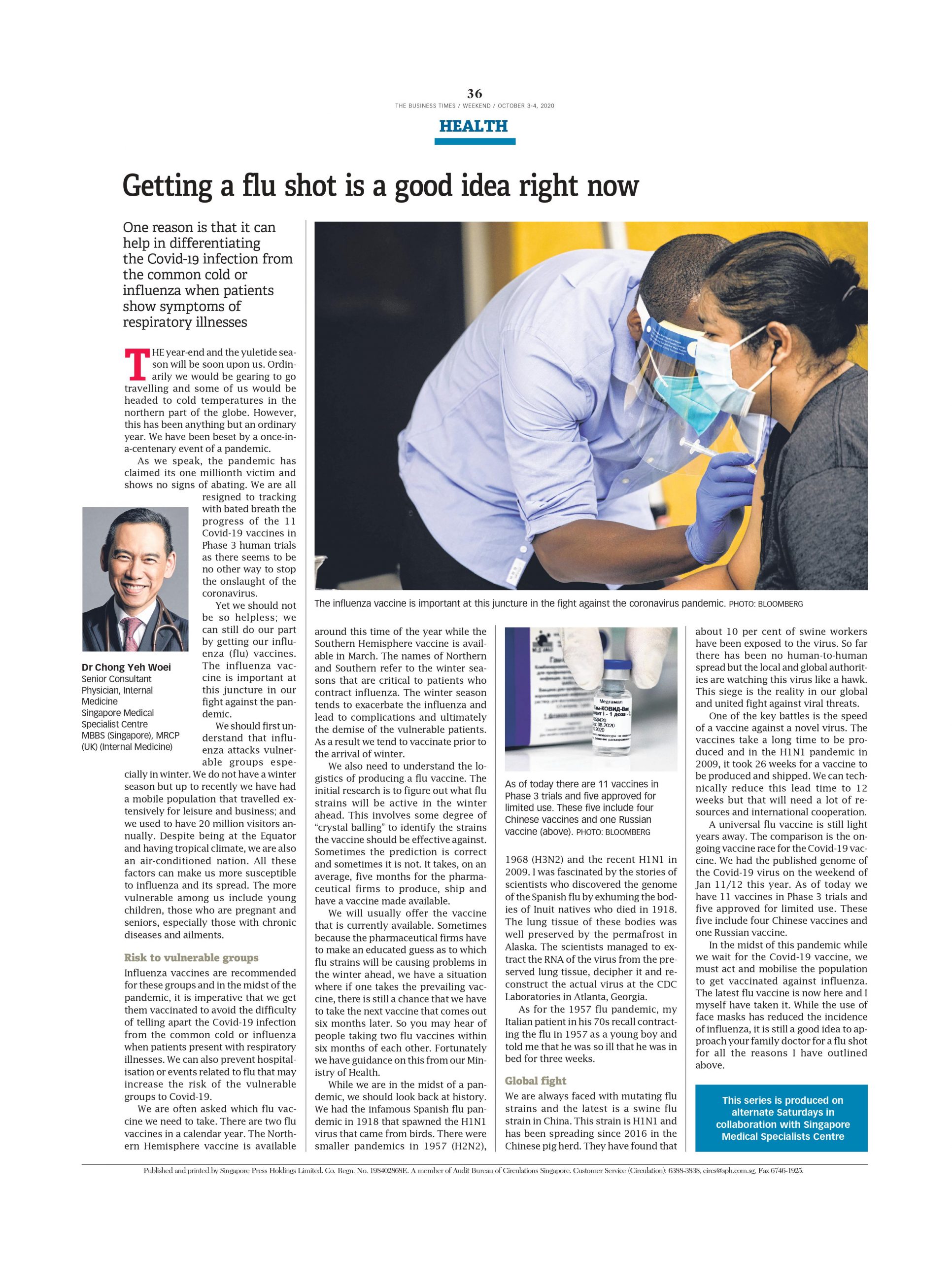GOOD nutrition, clean environments, accessibility to good healthcare and healthy lifestyles have increased human longevity. Nevertheless, the quest of increasing longevity is insatiable. As medical science pushes the boundaries of human lifespan, delving into the science of longevity can help us sieve through the reams of information and distil the essence of anti-ageing and cell preservation.
Cellular ageing
Cell ageing or cellular senescence is a physiological state with permanent cessation of the ability of the cell to replicate and accumulation of damaged DNA ( basic building blocks of genes), and this process is increased by ageing. This cellular senescence is marked by shortening of the protective terminal ends of the chromosomes which are called telomeres. Telomeres are like plastic caps at the ends of shoelaces, preventing them from being frayed and damaged. Shortening of the telomere is a sign of cellular senescence. In 1979, the first of the SIR (silent information regulator) proteins or sirtuins was reported. Over time more members of this protein group were found. In 1999, the publication of a study that reported that increased sirtuin activity could increase the lifespan of yeast cells by 70 per cent heralded a major breakthrough that accelerated the interest and research in sirtuins. Since then, there has been a growing body of evidence that the cell has a group of anti-ageing proteins, the sirtuins, that are essential for delaying cellular senescence and increasing the lifespan of organisms.
Anti-ageing proteins
Core to the science of anti-ageing is this group of proteins called sirtuins. In human cells, there are seven sirtuins (SIRT 1 to 7) with various roles within the cell. Three of these sirtuins (SIRT 3,4,5) control the generation of power for the needs of the cells and function in the mitochondria (power generator which produce the energy for the needs of the cell) with roles in cellular antioxidant balance and lipid metabolism. Another three sirtuins (SIRT 1, 6, 7) control the genetic framework in the cell and function in the cell nucleus (the central core of the genetic material in the cell) with roles in gene expression and DNA repair. There is one sirtuin (SIRT 2 mainly) which control the environmental processes within the cell and function in the cytoplasm (the liquid content within the cell). As an analogy, if the cell is a factory, the sirtuins are the executive management of the company directing and controlling all the aspects of the cell’s activities. They play important roles in maintaining the integrity of the cellular genetic structure, keeping the genetic material (chromatin) in a “wound up” protected state to reduce damage and in repairing damaged DNA.
Mechanisms of action
The main mechanisms of suppression of cellular senescence by sirtuin activity is via the actions of preventing telomere shortening or attrition, and promoting the repair of damaged DNA. Many proteins in the cells have a chemical tag called an acetyl group attached to it. One of the key ways in which sirtuins work is by the removal of the acetyl group from other molecules or proteins, thereby affecting the activity of the protein. This action has significant impact on the control centre of the cell, namely the activity of the genetic material or chromatin.
The basic building block of the genetic material, the DNA, is wrapped around groups of proteins called histones allowing the genetic material (chromatin) to be packed more compactly. When the histone protein has the acetyl group chemical tag , it causes the chromatin to be partially unwound and hence exposing the unwound DNA to be copied, thereby allowing the gene instruction to be passed to another cell or protein. As an analogy, it is as if a door to the office is opened and people are allowed to go into the office to copy instructions which are then passed to other offices. Once all the instructions are copied, the office door is closed. Hence, once the task is completed, the chromatin will not remain unwound as it will be more vulnerable to damage if it remains open.
Subsequently, the sirtuins can then remove the acetyl group from the histones which will then allow the chromatin to be closed by being “wound up” tightly, preventing DNA material from being copied and in effect silence the gene. Besides histones, sirtuins target other non-histone proteins such as proteins involved in copying genetic information and proteins that are involved in the repair of DNA. They are also known to regulate the production of the enzyme telomerase which is required for telomere elongation and maintenance of the integrity of the telomere. Most human cells have insufficient telomerase and hence there is progressive shortening of the telomere which is strongly indicative of progressive cellular ageing. Elongation of the chromosomal telomere is tantamount to reversing the biological clock.
Beneficial effects of sirtuin activity
Studies have shown that sirtuins have roles in the regulation of copying of gene information, modulation of energy production, prolongation of cell survival, reduction of DNA damage, reduction of cell damage and prolongation of longevity. Increased sirtuin activity in mammals has been associated with a delayed onset of age-related diseases and an increase in longevity. Sirtuins appear to be able to inhibit axonal (nerve fibre) degeneration, a process that often precedes the death of nerve cells as seen in neurodegenerative diseases such as Parkinson’s and Alzheimer’s disease.
It may also have protective effect on nerve cells, reducing processes that lead to the death o f nerve cells and the development of Alzheimer’s disease. Loss of sirtuin activity has been implicated in the development of cardiovascular and metabolic diseases including degeneration of arteries, acute damage to the heart muscle, thickening of the heart muscle, abnormal heart rhythms, high blood pressure, obesity, diabetes mellitus and abnormal lipid levels. While most of the studies have been done in animals, there is an increasing number of human studies.
There is presently an increasing body of evidence that shows increased sirtuin activity is indispensable for delaying cellular senescence and appears to protect the body against many age related diseases. In addition, studies support the role of sirtuins as anti-aging agents and potentially prolong longevity. Hence, lifestyle, dietary and pharmacological choices that increase sirtuin activity can potentially increase the anti-ageing effects and prolong longevity. These will be discussed in the next article where we will examine how we can make better decisions to increase our quality of life and lifespan.

